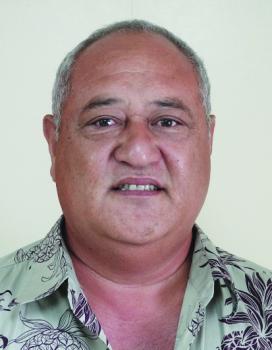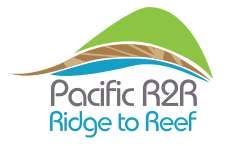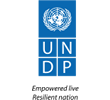| Name | Samasoni Sauni |
| Position | Pacific Ridge to Reef Regional Programme Coordinator |
| Organization | Pacific Community (SPC) |
| Town/Country | Suva, Fiji |
| Contact email | [email protected] |

Tell us a little bit about yourself:
Growing up in the outer islands and remote village of Tuvalu, I know too well the vulnerabilities and unique challenges of low-lying atolls and islands. The fate of local populations in these areas having to brace the elements of nature in times of natural disaster is extraordinary. There are memories of big waves inundating the already fragile thin coastline, and during times of cyclones, waves sweeping right through the land from ocean to lagoon side, and strong wind exerting extreme forces thereby damaging houses, fruit crops and trees. These experiences prompted my interest to pursue formal training in coastal management and progressed career pathway that seeks to address these challenges.
In my previous capacity I was R2R Science & National Project Team Leader at SPC. I also worked at the Forum Fisheries Agency as the Fisheries Advisor, and before that, Senior Fisheries Scientist again, at SPC. I have also worked at the University of the South Pacific as a Researcher and Project Coordinator and Director/Coordinator of a regional NGO - South Pacific Action Committee for Human Ecology and Environment. Prior to that, I was Senior Fisheries Officer at Tuvalu Fisheries Department.
My hobbies include: diving, fishing and playing tennis.
Why did you become involved with Pacific Ridge to Reef?
With training and experience in tropical coastal management, holding senior positions I bring both management and technical capacities to the R2R team to deliver on the Pacific Ridge to Reef goals and objectives. It is also an excellent opportunity to continue supporting efforts in the advancement of livelihood and security of our vulnerable and unique Pacific communities.
What have been your key contributions?
Leading a small team to implement the science work plan of R2R focusing, amongst others, implementing the science to policy framework.
Why is this important?
The milestone targets and deliverables of the regional IW R2R project are systematically linked, in most part, to the products of the above framework.
What have been your key learnings?
Unless there is support from stakeholders and local communities, it isn't easy if not challenging to achieve milestone targets. Transfer of skills, knowledge and technology and supported by adequate resourcing are vital drivers to garner that support. Maintain a balance between top-down and bottom-up approaches recognizing sensitivities and vulnerabilities seen by some as barriers to progress conservation and sustainable use efforts. In contrast, others may consider these as fundamental to ensuring support continues to project closure and successfully achieving milestone targets.
How will these experiences help you or provide opportunities for you/your community/your country in the future?
The results and lessons from the demonstration projects provide excellent case studies and references informing upscaling future R2R investments and ICM planning. For instance, where a national demonstrational project successfully delivers achieving stress reduction target forms a strong case to support replication.
Equally, where a demonstration project fails to deliver on target, the lessons that may be attributed to broad areas such as the approach, processes and modalities, are equally important for reconsideration and improvement. This is important if there are opportunities to continue testing innovative technologies in future demonstration projects.
What is a key message you would like to share on the importance of Ridge to Reef for people to know?
The whole of island approach is R2R, and land-sea connectivity is central for increased understanding and informed decisions for upscaling future R2R investments and ICM planning.
These efforts require a transformational change to realize tangible benefits and impacts of strategic R2R investments, and policy or legislative interventions – thereby responding to the community to cabinet approach.
Another key message is reiterating one R2R principle of evidence/ science-based planning & decision making.





